Training Camp 2: Playing with Objects
Use sensors to control motors and interact with objects on the competition field.
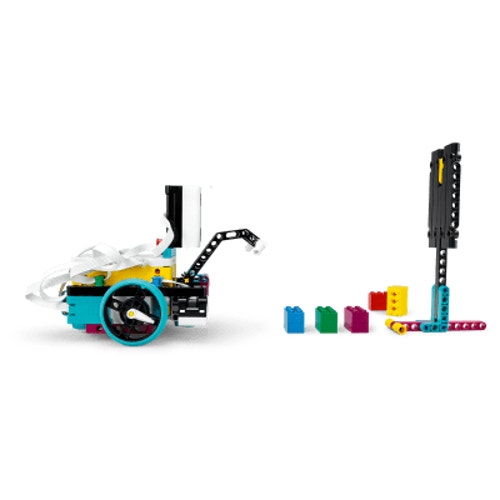
Lesson plan
1. Prepare
- Read through the pupil material in the LEGO® Education SPIKE™ App.
2. Engage (5 Min.)
- Use the ideas in the Ignite a Discussion section below to engage your pupils in a discussion relating to this lesson.
- Use the video to explain the lesson.
3. Explore (20 Min.)
- Have your pupils work in pairs to build the Practice Driving Base, arm, marker and cube.
- Ask them to try the two programming stacks to see which one will make their Driving Base stop at the marker.
- Have your pupils add extra programming blocks to their Driving Base in order to make the arm lower, collect and return the cube from a distance of at least 30 cm away from the marker.
4. Explain (5 Min.)
- Facilitate a discussion about how the Distance Sensor could be used to measure distance.
5. Elaborate (15 Min.)
- Have your pupils complete the relay race to see which team is the fastest!
- Don't forget to leave some time for tidying up.
6. Evaluate
- Give feedback on each pupil's performance.
- In order to simplify the process, you can use the assessment rubrics that have been provided.
Ignite a Discussion
Use these ideas to engage your pupils in a discussion about competition robots and how they must find objects and move them around:
- Ask your pupils to describe situations in which they've seen robots move objects from one place to another.
- Tell your pupils that their Driving Base can use sensors to detect objects and use an extra motor and arm to collect objects.
- Explain that your pupils are programming an autonomous robot. Ask them why autonomous mode is important in competitions.
Have your pupils watch this video to see what they're about to do.
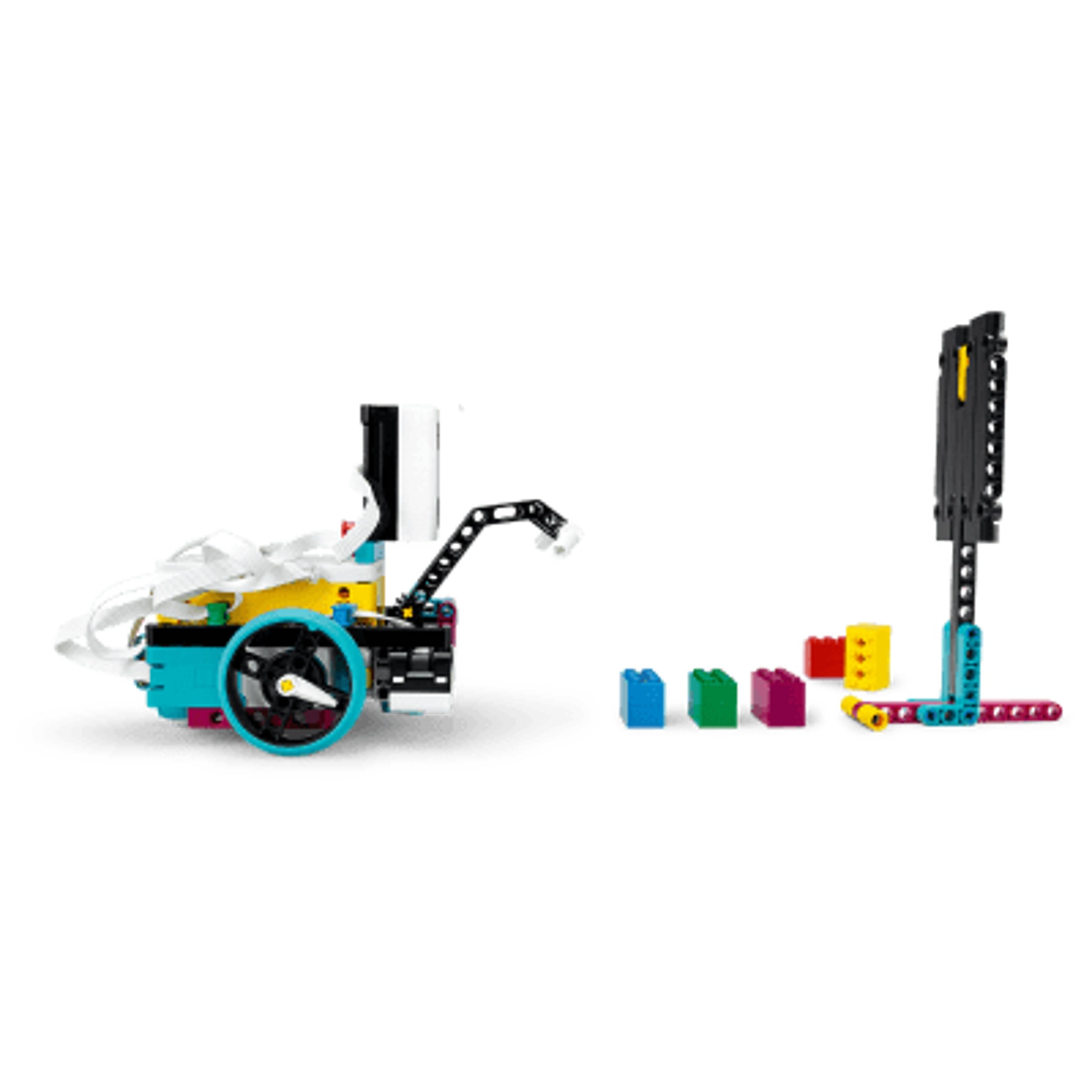
Building Tips
A Simple Driving Base with the Distance Sensor
Use the simple Driving Base model with the Distance Sensor. Remember to use the cable clips.
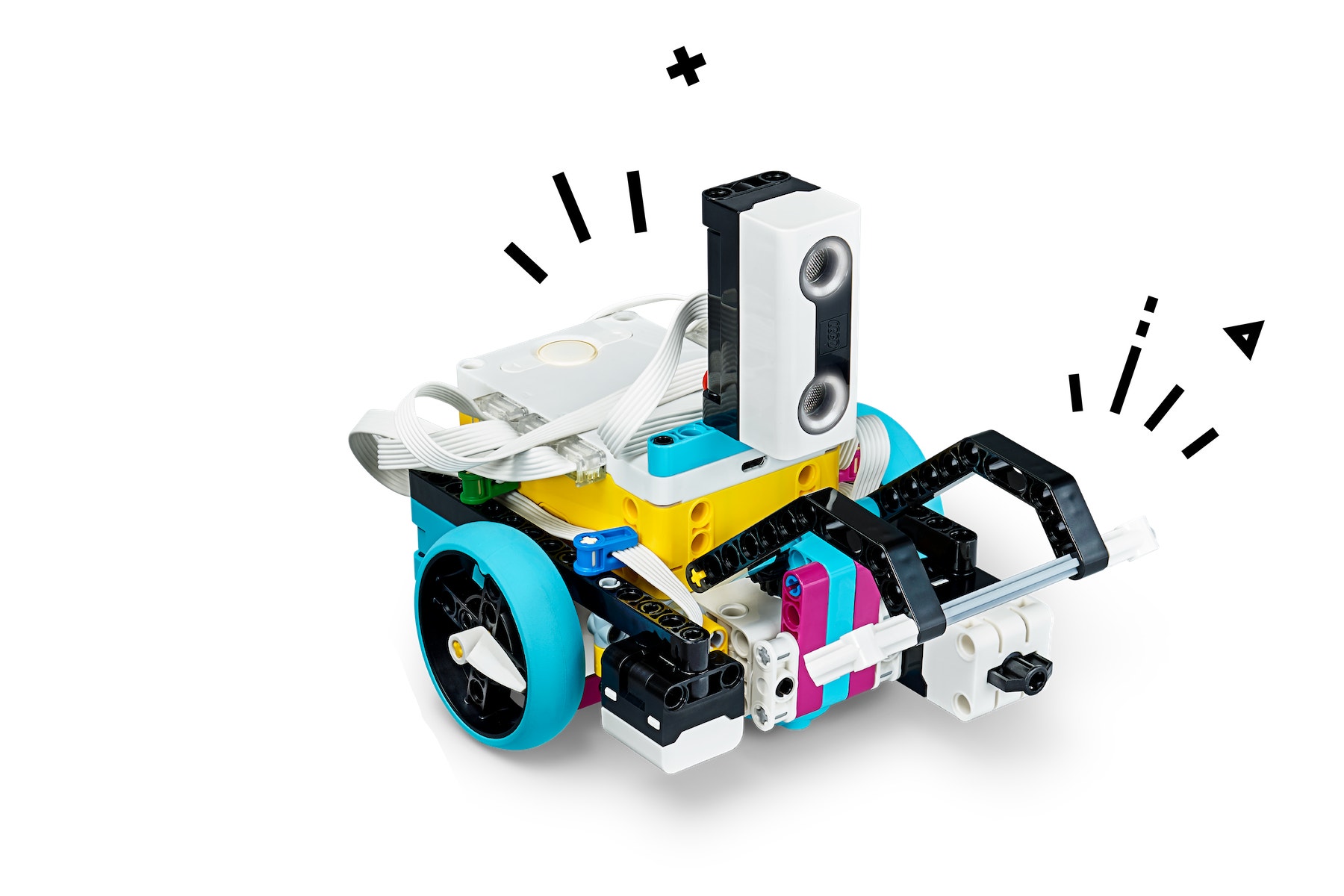
The Distance Sensor and the Arm
Your pupils will have to raise the arm enough (but not too much) so that it can move freely over the cube. If they raise it too high it'll interfere with the Distance Sensor.
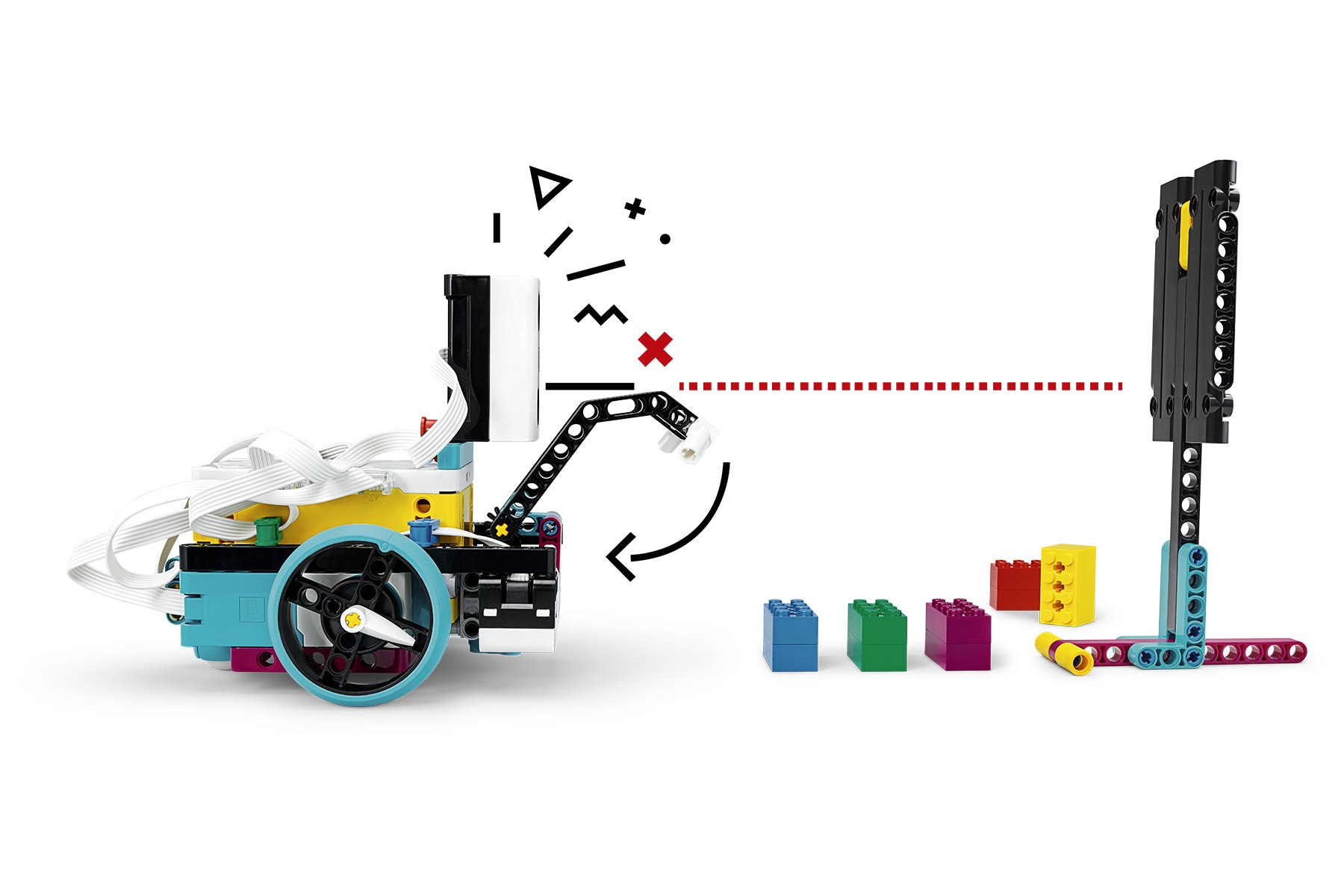
Set Up the Relay Race Challenge
Start with a distance of approximately 30 cm between the Driving Base and the marker.
Your pupils will have to physically remove each baton as it's delivered in order to allow the Driving Base to move forward and collect the next one.
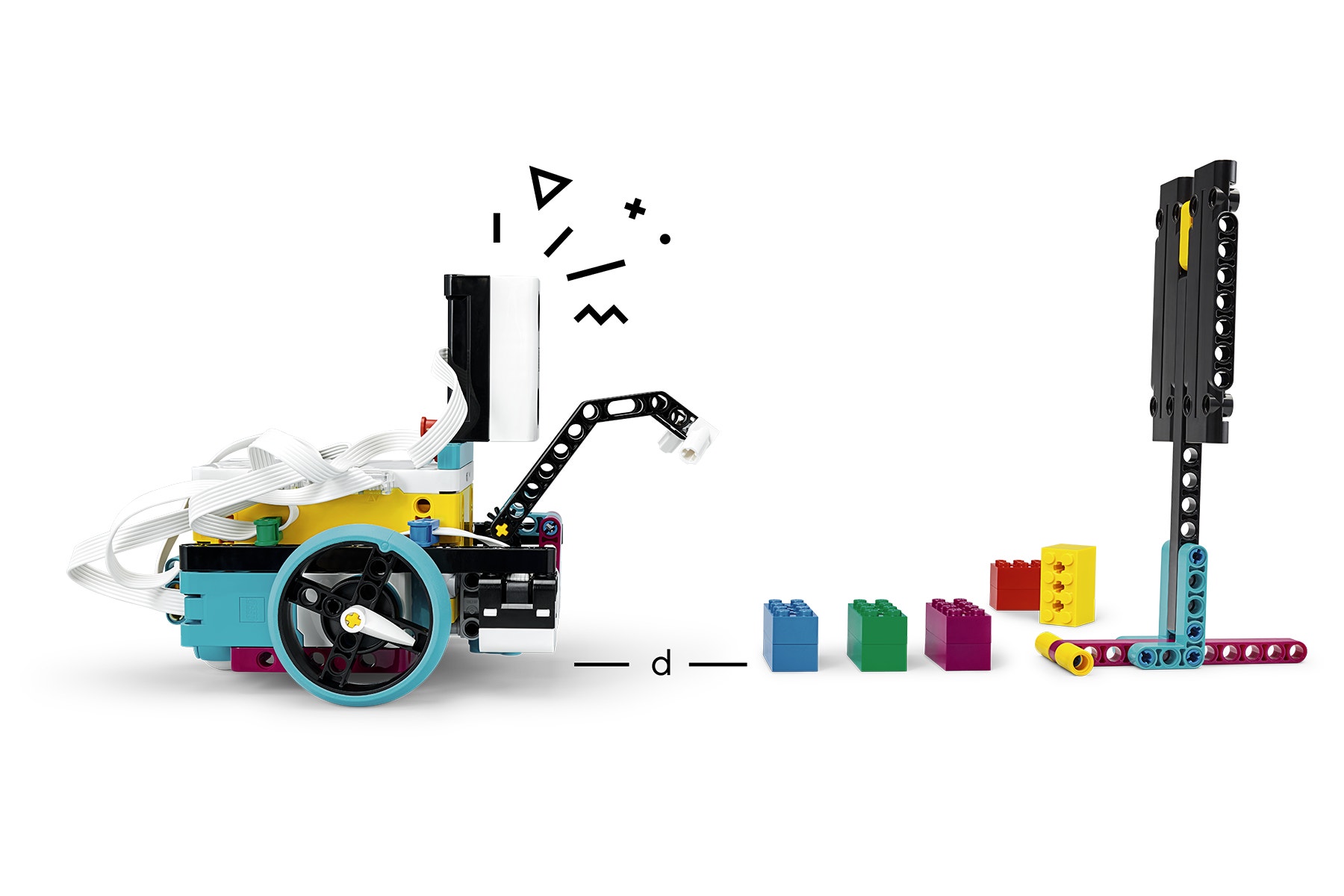
Coding Tips
Main Program

Possible Solution

Other Programs

Differentiation
Simplify this lesson by:
- Taking more time to explain how to use the Distance Sensor
Take this lesson to the next level by:
- Creating other challenges that use different objects in order to practice interacting with objects (e.g. challenge your pupils to use the Distance Sensor to return the block to its starting position)
Assessment Opportunities
Teacher Observation Checklist
Establish a scale that suits your needs, for example:
- Partially accomplished
- Fully accomplished
- Overachieved
Use the following success criteria to evaluate your pupils' progress:
- The pupils can expand their program to retrieve an object.
- The pupils can use the Distance Sensor to detect and retrieve an object.
- The pupils can change the parameters of the Distance Sensor Blocks to detect different distances.
Self-Assessment
Have each pupil choose the brick that they feel best represents their performance.
- Blue: I've used the Distance Sensor to detect and retrieve an object.
- Yellow: I've successfully completed the relay challenge.
- Violet: I've successfully completed the relay challenge and optimised my program to record a very fast time.
Peer-Assessment
Encourage your pupils to provide feedback to one another by:
- Having one pupil use the coloured brick scale above to score another pupil’s performance
- Asking them to present constructive feedback to one another so that they can improve their group’s performance during the next lesson

Language Arts Extension
To incorporate the development of language arts skills:
- Have your pupils redesign the game and devise with their own set of rules. Ask them to write down the rules and to create supporting images. Have the teams challenge each other.
Note: This will require additional time.
Maths Extension
To incorporate the development of maths skills:
When designing their new games, ask your pupils to maximise the use of numbers that are greater (>) or less than (<), by using:
- Distance Sensor values
- Reflected Light Sensor values
- Rotation angle values from the Gyro Sensor
Note: This will require additional time.
Career Links
The pupils who enjoyed this lesson might be interested in exploring these career pathways:
- Information Technology (Game Programming)
- Manufacturing and Engineering (Machine Technology)
- Manufacturing and Engineering (Pre-Engineering)
Teacher Support
The pupils will:
- Use estimation to stop at an object
- Use the Distance Sensor to detect an object and respond
LEGO Education SPIKE Prime Set
CAS Computing Progression Pathways
Algorithms:
Designs, writes and debugs modular programs using procedures. (AL) (DE) (AB) (GE)
Programming and Development:
Understands the difference between, and appropriately uses if and if, then and else statements. (AL)
Uses a variable and relational operators within a loop to govern termination. (AL) (GE)
Programming and Development:
Knows that computers collect data from various input devices, including sensors and application software. (AB)




